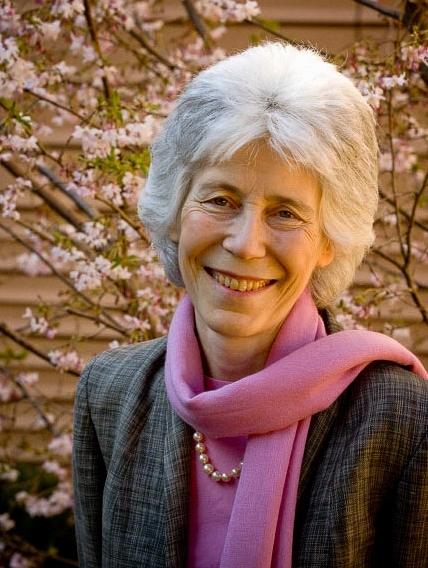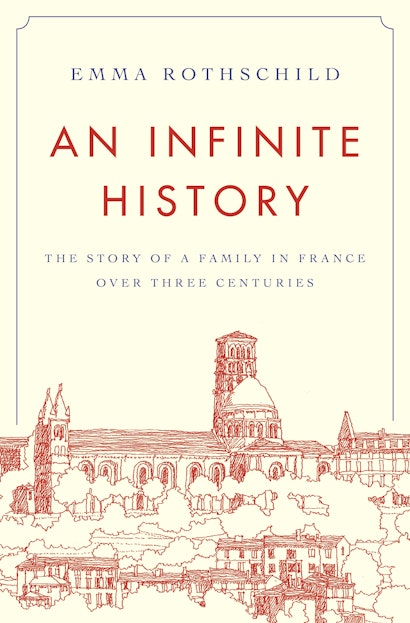Marie Aymard was an illiterate widow who lived in the provincial town of Angoulême in southwestern France, a place where seemingly nothing ever happened. Yet, in 1764, she made her fleeting mark on the historical record through two documents: a power of attorney in connection with the property of her late husband, a carpenter on the island of Grenada, and a prenuptial contract for her daughter, signed by eighty-three people in Angoulême. Who was Marie Aymard? Who were all these people? And why were they together on a dark afternoon in December 1764? Beginning with these questions, An Infinite History offers a panoramic look at an extended family over five generations. Through ninety-eight connected stories about inquisitive, sociable individuals, ending with Marie Aymard’s great-great granddaughter in 1906, Emma Rothschild unfurls an innovative modern history of social and family networks, emigration, immobility, the French Revolution, and the transformation of nineteenth-century economic life.
How did the project begin?
ER: I wanted to know what happened next. There were two pieces of paper that I saw in the archives in Angoulême. One was a declaration by Marie Aymard, in 1764, about her husband, a carpenter who had gone to the island of Grenada, and died on the way home. The other was the pre-nuptial contract of her daughter, with the son of a tailor, also in 1764. I turned to the last page of the contract, and to my amazement saw that there were eighty-three signatures. I started trying to read the names, and wondering who they all were, and why they were there, on a dark afternoon in December 1764. I was curious, really; I wanted to know how the story ended. One thing led to another. The only way to find out who the individuals were, in the end, was to look at their own stories, into the next generation. There was a sunny morning (in California) when I realised that the inquiry was becoming a book. It ends, now, with the fifth generation, or the great-grandchildren of the couple in the marriage contract.
Is it a family history, like ancestry?
ER: Yes and no. It is the story of someone else’s family. This is an odd experience in that the search functions in the genealogy websites (to which I now subscribe) are usually about “you,” or “place where your ancestor lived.” The story in the book is at the same time the opposite of a family history. The search for ancestry starts with the individual, the “you,” in the present, and moves backwards in time to ever more distant grandparents and great-grandparents. An Infinite History starts with an individual, Marie Aymard, and moves forward, generation by generation, to relatives whom she did not imagine. The story is different, too, in that I’ve been interested, throughout the inquiry, in the family’s friendships, in their occupations, in the streets where they lived, and in the sisters and nieces who were not ancestors of anyone. The most important figures in the nineteenth-century history, as it turned out, were five sisters, Marie Aymard’s grand-daughters, who never married, lived in Angoulême throughout their lives, and were at the center of the exchanges of the entire extended family. Historians have many things to find in family history. One of the things that family historians can perhaps find in history is a sense of how much there is to discover – about one’s great-grandparents, and also about these distant ancestors’ own friends and sisters and neighbours and adventures.
Your earlier book, The Inner Life of Empires, is also about a large family. Is there a connection?
ER: The two families are so different. I was certainly interested, in both books, in the possibilities of a micro-history that was also a large history, in the sense of moving outwards from a few individuals to their own connections, and in the sense of telling an important story, particularly about political and economic life. The Johnstones, in the earlier book, were mostly unsuccessful, but they were also highly, almost frantically literate, and I found hundreds of their letters, as well as diaries and notebooks, in archives around the world. Marie Aymard was illiterate, and while all her children learned to write, there are no family letters at all that have survived (or that I have been able to find, so far), until the 1880s; and then only because one of the great-great-grandchildren turned out to be very famous—Charles Martial Allemand-Lavigerie, cardinal of Algiers and opponent of the trans-Saharan slave trade—and some of his sister’s letters are conserved in his archive in Rome. The family were literate, but they were not rich enough, or settled enough, for anyone to have kept their letters. So I was very interested, in the new book, in the extent to which one can write a large micro-history on the basis, for the most part, of the most obvious and universal records of births, marriages, deaths (and one divorce, in 1796.)
In what way is the book about politics and economics?
ER: I followed the family, and the other individuals in Angoulême, over the course of the overlapping generations of their lives, which was to follow them into historical times. Their lives changed profoundly during the French revolution, and to think about these changes was to think about the ways in which property, and the church, and individuals’ choices of how to live, and who to marry, were transformed by public events. The family’s destinies were also transformed by the economic changes of the nineteenth century. There was spectacular inequality in the fifth generation of the extended family: one of the cardinal’s third cousins was a street seller, a marchande ambulante, living in poverty in Paris, and one was married to a rich (and eventually disgraced) banker in Le Mans. The family were only minimally involved in the “modern” industries of the times. They prospered, to the extent that they did so, as school teachers, or as minor officials of the administration of taxes. The five unmarried sisters were important, in part, because the oldest sister, who kept a small shop during the revolution, had taken out a mortgage on confiscated property that her parents had acquired, and bought a house on the ramparts in Angoulême, in which she and her sisters started the girls’ school that became the center of the family’s life. Thinking about their choices, in the end, has been a way of thinking about large transformations in economic life.
How has the book been an encounter with novelists and the novel?
ER: The book tells a story, or ninety-eight stories. There are beginnings and endings. I hope that the reader will be interested, as I was, in finding out what happened next. But I was also intensely conscious, throughout, of how different it was to write a work of history and a work of fiction. There are masses of end-notes, and this is partly because I was so determined to show that everything in the story really happened. I had a sense, from time to time, of what some of the individuals in the book were really like, only to discover something new, some new historical fact, that changed my perspective. I am sure that I, or someone else, will discover other new circumstances, and the perspectives will change again; this is part of what I meant by calling the book an “infinite history.”
I was reading nineteenth-century novels all the time, while I was writing the book, and I had the impression, often, that the real, historical lives of this family were a replica of lives of characters in Balzac and Zola. The most poignant scene of Les Ilusions Perdues takes place on the corner of the street where Marie Aymard’s grand-daughters were living at the time. One of the stories in An Infinite History is about the little dog of Laurence Sterne’s daughter Eliza, which was stolen on the same street many years before; on behalf, or so it was suggested, of the estranged wife of the employer of Marie Aymard’s husband in the island of Grenada.
What about the magpie?
ER: Yes. The book is beautifully made, and I was so happy with the red endpapers, and the little magpies. I say at the beginning of the book that “this is a history in the spirit of the gazza ladra, the thieving magpie who flies away with teaspoons and plates and shiny new coins.” It is a very late-modern history, in the sense that I was constantly looking for new connections, and being distracted by new stories. One thing leads to another. The book is an elegy to archives, in a way, and it is also an elegy to the new possibilities of doing history. This is the point of the gazza ladra.
Emma Rothschild is the Jeremy and Jane Knowles Professor of History at Harvard University, where she directs the Center for History and Economics. Her books include The Inner Life of Empires (Princeton) and Economic Sentiments.

